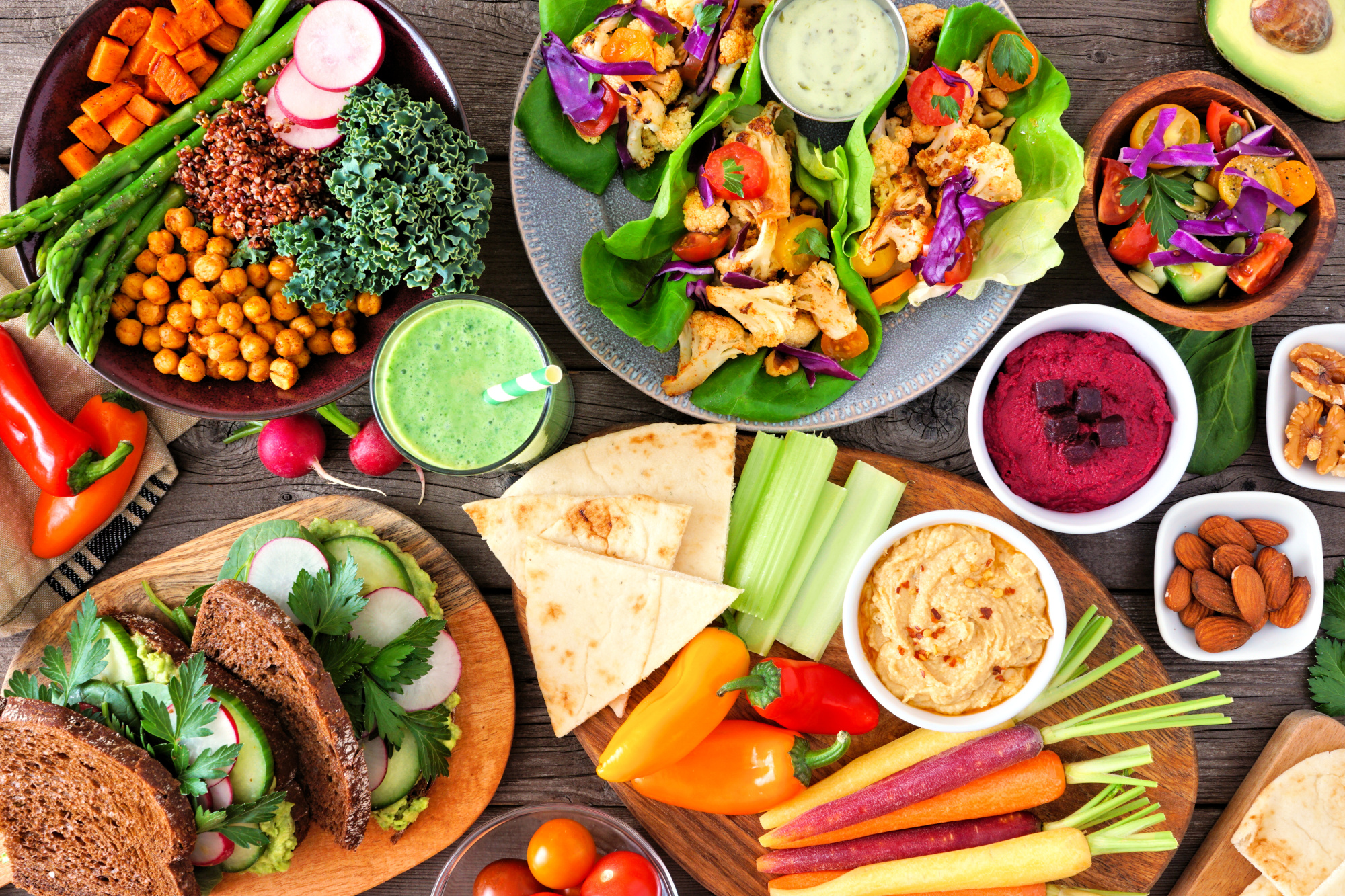In addition to the risks of newly emerging pathogens, there are other factors that can further exacerbate the overall impact of zoonotic pandemics. In our previous blog we explored other communicable food-borne diseases. We’ll now take a closer look at the third factor – non-communicable diet-related diseases.
Other communicable food-borne diseases
In addition to the risks of newly emerging pathogens, there are other factors that can further exacerbate the overall impact of zoonotic pandemics. In our previous blog we explored antimicrobial resistance and the resulting superbugs. We’ll now take a closer look at the second factor – other communicable food-borne diseases.
Animal-based products – a double-risk diet
There is mounting evidence that the development of diet-related chronic diseases such as obesity, type-2 diabetes, and cardiovascular diseases, as well as some forms of cancer, is made more likely by the excessive consumption of animal-based products. All of these conditions constitute, in and of themselves, serious threats to individual and public health. Additionally, they put people in a high-risk group during a pandemic such as COVID-19, putting further strain on individual health and healthcare systems.
Lifestyle diseases – tipping the scale for COVID-19 patients
Early studies from China show that the risk of a severe case of COVID-19 is significantly increased in people with diet-related diseases. Data from 1,590 laboratory-confirmed hospitalised COVID-19 patients shows that people with hypertension and cancer had particularly severe cases, defined as being admitted to an intensive care unit, requiring invasive ventilation, or death.442 A second analysis of a total of 72,314 patient records shows that people over the age of 80 had the highest case-fatality rate of all age groups, at 14.8%, followed by patients with cardiovascular disease (10.5%), diabetes (7.3%), chronic respiratory disease (6.3%), hypertension (6.0%), and cancer (5.6%) – most of which are so-called lifestyle diseases that are closely linked to the ways we eat and live.1
Obesity
Obesity has been coined a global epidemic by WHO and referred to as “one of today’s most blatantly visible – yet most neglected – public health problems”.2 And, like other diseases that put a strain on the body, it is positively correlated with the impact of infections. Data from 274 US counties showed that communities with a greater prevalence of obesity were more likely to have high influenza-related hospitalisation rates. Similarly, people with lower fruitand-vegetable consumption tended to have higher influenza-related hospitalisation rates, even after accounting for obesity.3 In addition, during the 2009 influenza A (H1N1) pandemic, obesity was a risk factor for hospitalisation and death.4 Long-term studies of the links between lifestyle, diet, and disease found that the more kinds of animal-based foods in participants’ diets, the higher their BMI (body mass index) scores.5 6
Cardiovascular diseases
Cardiovascular diseases are the number one cause of death, globally. They include diseases of the heart and blood vessels such as coronary heart disease, cerebrovascular diseases, and rheumatic heart disease.7 Diet and lifestyle have a major influence on the development of cardiovascular diseases. An unhealthy diet, low in fruits and vegetables and rich in saturated fatty acids, along with physical inactivity, tobacco use, and harmful use of alcohol, are the most important risk factors. However, a high level of meat consumption is considered an independent risk factor in the development of cardiovascular diseases. A 2009 study in the US, which included an impressive 500,000plus participants, showed an increased risk for cardiovascular disease in the participants who consumed the most meat, compared with those participants with the lowest meat intake.8 WHO points out that “most cardiovascular diseases can be prevented by addressing behavioural risk factors”.9 Previous evaluations of patients with COVID-19 show that cardiovascular disease increases the incidence and severity of infection. In addition, coronavirus infection can cause damage to the heart muscle, which can be another major factor for a negative prognosis.10 For example, in an analysis of 187 patients from Wuhan who were hospitalised with COVID-19, 35% had underlying cardiovascular disease and 28% had indications of acute myocardial injury.11 Another small study of 150 patients with laboratory-confirmed COVID-19 indicated that cardiovascular disease was more common in patients who died (13 out of 68) than in patients who survived (1 out of 82).12 Similarly, the largest analysis to date of COVID-19 cases in mainland China shows that the case-fatality rate was 2.3% (1,023 deaths out of 44,672 confirmed cases), but reached 10.5% in patients with underlying cardiovascular disease.13
Cancer
High consumption of red meat is also associated with numerous cancers. In 2015, WHO classified processed meat as a Group 1 carcinogen. This classification means that there is sufficient evidence from epidemiological studies that foods such as bacon, sausages, and ham can cause cancer. In addition, red meat has been classified as a Group 2A carcinogen, which means that foods such as beef, veal, and pork are likely to cause some types of cancer.14
During a pandemic, patients with cancer face all the same risks as the rest of the population. In addition, patients with some forms of cancer or who are at specific stages of their disease or treatment are also particularly susceptible to bacterial infections due to weakened immune systems.15 16 While there is not yet much information about the effects of COVID-19 on cancer patients, early data from China has shown that 39–54% of patients with cancer were reported to have a severe event when infected with COVID-19.17
Eating our way to hospital
The current animal-focused food system is driving an antibiotics apocalypse, while also increasing the occurrence of communicable and non-communicable food-related diseases and escalating the risk of future zoonotic pandemics. The consumption of animal-based products thus intensifies the overall burden on the healthcare system, monopolising emergency capacities. It can also contribute to an individual’s chances of ending up in a high-risk category when contracting an infectious disease such as COVID-19.
>References
- The Novel Coronavirus Pneumonia Emergency Response Epidemiology Team The Epidemiological Characteristics of an Outbreak of 2019 Novel Coronavirus Diseases (COVID-19) — China, 2020. China CDC Weekly 2(8), 113–122. doi:10.46234/ccdcw2020.032
- WHO: Controlling the global obesity epidemic. World Health Organization. Available at https://www.who.int/nutrition/topics/obesity/en/. [Accessed: 27.5.2020]
- Charland, K. M., D. L. Buckeridge, A. G. Hoen, et al. (2013): Relationship between community prevalence of obesity and associated behavioral factors and community rates of influenza-related hospitalizations in the United States: Obesity, diet, exercise, and influenza. Influenza and Other Respiratory Viruses 7(5), 718–728. doi:10.1111/irv.12019
- Morgan, O. W., A. Bramley, A. Fowlkes, et al. (2010): Morbid Obesity as a Risk Factor for Hospitalization and Death Due to 2009 Pandemic Influenza A(H1N1) Disease. PLoS ONE 5(3), e9694. doi:10.1371/journal.pone.0009694
- Tonstad, S., K. Stewart, K. Oda, et al. (2013): Vegetarian diets and incidence of diabetes in the Adventist Health Study-2. Nutrition, Metabolism and Cardiovascular Diseases 23(4), 292–299. doi:10.1016/j.numecd.2011.07.004
- Tonstad, S., T. Butler, R. Yan, et al. (2009): Type of Vegetarian Diet, Body Weight, and Prevalence of Type 2 Diabetes. Diabetes Care 32(5), 791–796. doi:10.2337/dc08-1886
- WHO (2017): Cardiovascular diseases (CVDs). World Health Organization. Available at https://www.who.int/news-room/fact-sheets/detail/cardiovascular-diseases-(cvds). [Accessed: 27.5.2020]
- Sinha, R., A. J. Cross, B. I. Graubard, et al. (2009): Meat Intake and Mortality: A Prospective Study of Over Half a Million People. Archives of Internal Medicine 169(6), 562. doi:10.1001/archinternmed.2009.6
- WHO (2017): Cardiovascular diseases (CVDs). World Health Organization. Available at https://www.who.int/news-room/fact-sheets/detail/cardiovascular-diseases-(cvds). [Accessed: 27.5.2020]
- Zhao, M., M. Wang, J. Zhang, et al. (2020): Advances in the relationship between coronavirus infection and cardiovascular diseases. Biomedicine & Pharmacotherapy 127 110230. doi:10.1016/j.biopha.2020.110230
- Guo, T., Y. Fan, M. Chen, et al. (2020): Cardiovascular Implications of Fatal Outcomes of Patients With Coronavirus Disease 2019 (COVID-19). JAMA Cardiology doi:10.1001/ jamacardio.2020.1017 doi:10.1001/jamacardio.2020.1017
- Ruan, Q., K. Yang, W. Wang, et al. (2020): Clinical predictors of mortality due to COVID-19 based on an analysis of data of 150 patients from Wuhan, China. Intensive Care Medicine 46(5), 846–848. doi:10.1007/s00134-020-05991-x
- Wu, Z. & J. M. McGoogan (2020): Characteristics of and Important Lessons From the Coronavirus Disease 2019 (COVID-19) Outbreak in China: Summary of a Report of 72 314 Cases From the Chinese Center for Disease Control and Prevention. JAMA 323(13), American Medical Association, 1239–1242. doi:10.1001/jama.2020.2648
- WHO (2015): Q&A on the carcinogenicity of the consumption of red meat and processed meat. Available at http://www.who.int/features/qa/cancer-red-meat/en/ [21.04.2020]
- Battershill, P. M. (2006): Influenza pandemic planning for cancer patients. Current Oncology 13(4), 119–120.
- Alhalabi, O. & V. Subbiah (2020): Managing Cancer Care during the COVID-19 Pandemic and Beyond. Trends in Cancer doi:10.1016/j.trecan.2020.04.005 doi:10.1016/j.trecan.2020.04.005
- Alhalabi, O. & V. Subbiah (2020): Managing Cancer Care during the COVID-19 Pandemic and Beyond. Trends in Cancer doi:10.1016/j.trecan.2020.04.005 doi:10.1016/j.trecan.2020.04.005
- Schraer, R. (2020): Coronavirus: Cancer surgery delays risk ‘thousands’ of deaths. BBC. Available at: https://www.bbc.com/news/health-52722150 [Accessed: 05.06.2020]
- Dinmohamed, A. G., O. Visser, R. H. A. Verhoeven, et al. (2020): Fewer cancer diagnoses during the COVID-19 epidemic in the Netherlands. The Lancet Oncology 0(0), Elsevier, doi:10.1016/S1470-2045(20)30265-5










